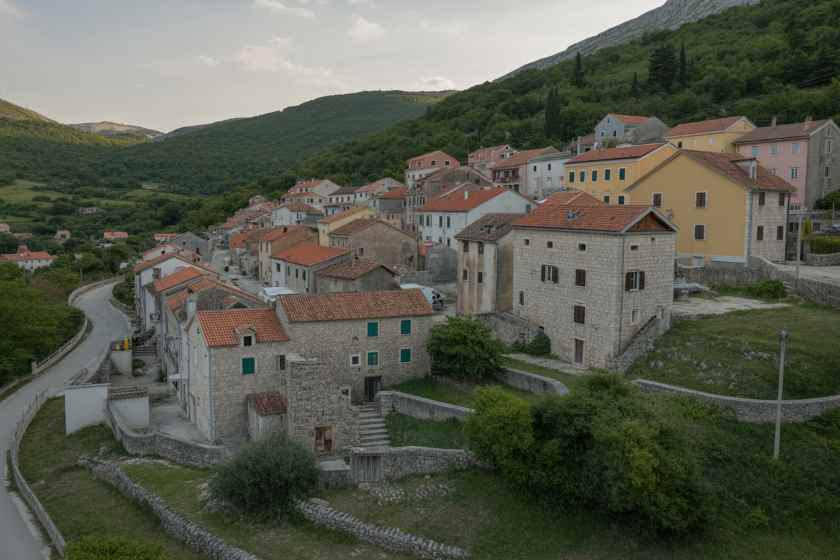Kaštelir-Labinci: A Sustainable Tourism Paradise in Croatia’s Istria Region – Travel And Tour World

Report on Kaštelir-Labinci’s Recognition as a UNWTO Best Tourism Village 2025
1.0 Introduction
The municipality of Kaštelir-Labinci, located in Istria, Croatia, has been designated one of the Top 52 Best Tourist Villages for 2025 by the United Nations World Tourism Organization (UNWTO). This recognition highlights a global shift in tourism preferences towards authentic, sustainable, and rural destinations over mass tourism models. The village’s success is predicated on its strategic alignment with the United Nations Sustainable Development Goals (SDGs), focusing on environmental preservation, cultural heritage, and community-based economic growth.
2.0 Alignment with Sustainable Development Goals (SDGs)
Kaštelir-Labinci’s tourism strategy demonstrates a profound commitment to the UN’s 2030 Agenda for Sustainable Development. The village’s initiatives directly contribute to several key SDGs:
- SDG 8: Decent Work and Economic Growth: By fostering agrotourism and supporting local artisans, the village promotes sustained, inclusive, and sustainable economic growth, creating productive employment opportunities within the community.
- SDG 11: Sustainable Cities and Communities: The village actively works to protect and safeguard its cultural and natural heritage. Infrastructure development, such as green-roofed accommodations, is implemented in a manner that preserves the authentic character of the Istrian countryside.
- SDG 12: Responsible Consumption and Production: A core component of the village’s appeal is its emphasis on sustainable consumption and production patterns. This is achieved through the promotion of regional agriculture, locally sourced food in restaurants and markets, and the conservation of traditional farming methods.
- SDG 15: Life on Land: The development of natural spaces and nature reserves, coupled with the promotion of eco-tourism activities like hiking and cycling, contributes to the conservation of local biodiversity and terrestrial ecosystems.
3.0 Key Sustainable Tourism Initiatives
The village’s recognition is supported by tangible actions and certified progress in sustainable tourism, as noted by the UNWTO’s “Improvement of Regional tourist offers on rural and environmentally sensitive tourism activities” program. Key initiatives include:
- Sustainable Infrastructure: Development projects prioritize environmental harmony, including the construction of green-roofed accommodations that minimize ecological impact and blend with the natural landscape. This directly supports SDG 11.
- Promotion of Agrotourism: The local economy is bolstered by a focus on agrotourism. Visitors are offered immersive experiences such as olive harvesting and wine tasting tours, which preserve traditional practices and provide direct economic benefits to local farmers, aligning with SDG 8 and SDG 12.
- Conservation of Local Culture and Agriculture: The village champions the use of regional agricultural products and endorses the conservation of traditional farming. This ensures the authenticity of the visitor experience and supports sustainable food systems.
- Development of Eco-Tourism: A network of trails and nature reserves has been established to cater to eco-conscious travelers. This encourages low-impact activities and fosters an appreciation for the region’s biodiversity, contributing to SDG 15.
4.0 A Model for Rural Tourism Development
The case of Kaštelir-Labinci serves as a replicable model for other rural destinations seeking to develop a sustainable tourism sector. Its success illustrates a growing trend in European tourism towards destinations that offer authentic experiences away from overcrowded coastal areas.
4.1 Diversification of Croatia’s Tourism Portfolio
Kaštelir-Labinci’s achievement signals an important opportunity for the Croatian tourism sector to diversify its offerings. By promoting rural hubs, the nation can distribute tourism’s economic benefits more equitably and reduce environmental pressure on popular coastal cities. This approach supports a more resilient and sustainable national tourism industry, in line with SDG 8.
4.2 Integration of Conservation and Enterprise
The village exemplifies how the preservation of natural and cultural assets can be integrated with a viable economic model. By making its heritage and landscape the core of its tourism product, Kaštelir-Labinci ensures their long-term protection while generating sustainable revenue.
5.0 Conclusion
The UNWTO’s recognition of Kaštelir-Labinci as a Best Tourism Village is a validation of its comprehensive strategy centered on sustainability, community, and authenticity. The village’s alignment with the Sustainable Development Goals provides a clear framework for how rural destinations can thrive by protecting their environmental and cultural heritage. As the global tourism industry continues to evolve towards more responsible practices, Kaštelir-Labinci stands as a benchmark for sustainable rural development in Croatia and beyond.
Analysis of Sustainable Development Goals in the Article
1. Which SDGs are addressed or connected to the issues highlighted in the article?
-
SDG 8: Decent Work and Economic Growth
- The article highlights how Kaštelir-Labinci’s focus on sustainable tourism, agrotourism, and supporting local businesses enhances the local economy. This directly relates to promoting sustained, inclusive, and sustainable economic growth.
-
SDG 11: Sustainable Cities and Communities
- The village’s commitment to preserving its cultural and natural heritage, including the “original shape of the Istrian countryside,” medieval towns, and traditional practices, aligns with the goal of making human settlements inclusive, safe, resilient, and sustainable.
-
SDG 12: Responsible Consumption and Production
- The article emphasizes sustainable tourism practices that comply with UN protocols, the use of regional agriculture, locally sourced artisanal food, and eco-tourism. This reflects the goal of ensuring sustainable consumption and production patterns.
-
SDG 15: Life on Land
- The focus on conserving the environment, preserving the Istrian countryside, and the mention of an “ever-increasing chain of natural spaces and nature reserves” with “diverse animal and plant life” connect directly to protecting and restoring terrestrial ecosystems.
2. What specific targets under those SDGs can be identified based on the article’s content?
-
Target 8.9: “By 2030, devise and implement policies to promote sustainable tourism that creates jobs and promotes local culture and products.”
- The article explicitly states that Kaštelir-Labinci’s model of sustainable tourism benefits the local economy by promoting local delicacies, wine, olive oil, and artisanal products. The entire initiative, recognized by the UNWTO, is a policy in action to promote local culture and products through tourism.
-
Target 11.4: “Strengthen efforts to protect and safeguard the world’s cultural and natural heritage.”
- The village is praised for preserving its “rich natural and cultural heritages,” maintaining the “original shape of the Istrian countryside,” and offering experiences that involve “local activities full of history and traditions.” This demonstrates a clear effort to safeguard its heritage.
-
Target 12.b: “Develop and implement tools to monitor sustainable development impacts for sustainable tourism…”
- The article mentions that the village’s progress is “certified by the World Organisation on the ‘Improvement of Regional tourist offers on rural and environmentally sensitive tourism activities'” and that its practices “comply with UN protocols.” The UNWTO’s “Best Tourism Villages” initiative itself acts as a monitoring and recognition tool for sustainable tourism.
-
Target 15.1: “By 2020, ensure the conservation, restoration and sustainable use of terrestrial and inland freshwater ecosystems and their services…”
- The article describes the village’s commitment to conserving the environment, its “enchanting beauty,” “green vineyards, and endless olive groves.” The mention of an “ever-increasing chain of natural spaces and nature reserves” and the protection of “diverse animal and plant life” directly reflects actions towards this target.
3. Are there any indicators mentioned or implied in the article that can be used to measure progress towards the identified targets?
-
Indicators for Target 8.9:
- Recognition by UNWTO: Being named one of the “Top 52 Best Tourist Villages 2025” serves as a direct indicator of successful sustainable tourism policy implementation.
- Support for Local Businesses: The presence and success of local farms, restaurants, cafes, and markets providing “locally sourced artisanal food and other products” is a measurable indicator of promoting local products.
- Development of Agrotourism: The availability of activities like “olive harvesting and wine tasting tours” indicates the promotion of local culture and economy through tourism.
-
Indicators for Target 11.4:
- Preservation of Landscape: The article’s description of the village preserving the “original shape of the Istrian countryside” and its “picturesque and authentic” character implies a qualitative indicator of heritage protection.
- Continuation of Traditional Practices: The endorsement and conservation of “traditional farming practices” is a specific indicator of safeguarding cultural heritage.
-
Indicators for Target 12.b:
- Sustainable Infrastructure: The construction of “green-roofed accommodations” is a concrete indicator of implementing sustainable practices.
- Local Sourcing: The championing of “regional agriculture” and the use of “locally grown ingredients” in restaurants and markets are indicators of sustainable consumption and production within the tourism sector.
- Official Certification: The certification from the “World Organisation on the ‘Improvement of Regional tourist offers…'” is a formal indicator of monitored sustainable progress.
-
Indicators for Target 15.1:
- Protected Natural Areas: The “ever-increasing chain of natural spaces and nature reserves” is a quantifiable indicator of conservation efforts.
- Biodiversity Protection: The mention of the vicinity “teeming with diverse animal and plant life” serves as a qualitative indicator of a healthy ecosystem being preserved.
Summary of SDGs, Targets, and Indicators
| SDGs | Targets | Indicators |
|---|---|---|
| SDG 8: Decent Work and Economic Growth | 8.9: Promote sustainable tourism that creates jobs and promotes local culture and products. |
|
| SDG 11: Sustainable Cities and Communities | 11.4: Strengthen efforts to protect and safeguard the world’s cultural and natural heritage. |
|
| SDG 12: Responsible Consumption and Production | 12.b: Develop and implement tools to monitor sustainable development impacts for sustainable tourism. |
|
| SDG 15: Life on Land | 15.1: Ensure the conservation, restoration and sustainable use of terrestrial and inland freshwater ecosystems. |
|
Source: travelandtourworld.com
What is Your Reaction?
 Like
0
Like
0
 Dislike
0
Dislike
0
 Love
0
Love
0
 Funny
0
Funny
0
 Angry
0
Angry
0
 Sad
0
Sad
0
 Wow
0
Wow
0
















































/environment-climate-change-and-health-(ech)/water-sanitation-hygiene-and-health-(wsh)/landfill-tuvalu-36092.tmb-1200v.jpg?sfvrsn=5c21fe40_1#)

.jpg.webp?itok=0ZsAnae9#)
























